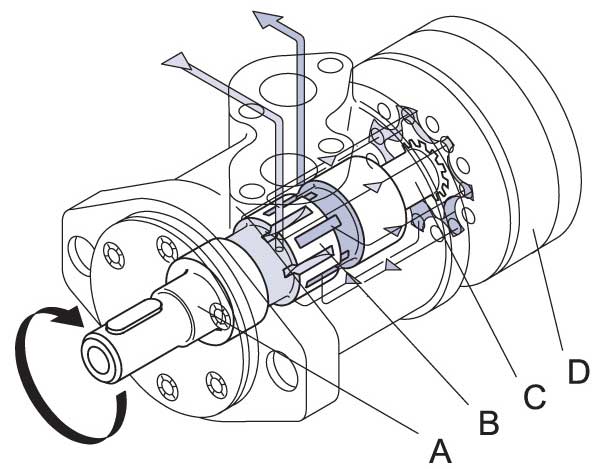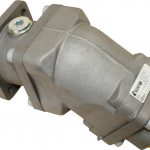Drive calculation for vehicles
1. motor speed: n, RPM

v km – vehicle speed, km/h;
v ml – vehicle speed, mil/h;
Rm – rolling radius wheel, m;
Rin – rolling radius wheel, in;
i – transmission factor from motor to drive wheels. Without transmission gear, i=1.
2. rolling resistance: RR, daN [lbs]
Resistance force, which results from the contact of the wheels on different surfaces:
RR=G x ρ
G– total weight of the vehicle load, daN [lbs]
ρ– coefficient of rolling resistance (Table 1)

3. gradient resistance: GR, daN [lbs]
GR=G x (sinα + ρ x cosα)
α – inclination angle (Table 2)

4. acceleration force: FA, daN [lbs]
The force FA, required to achieve acceleration from 0 to a maximum velocity v in time t, is calculated using the following formula:

FA – acceleration force, daN [lbs]
t – time, [s].
Find out more about hydraulic motors!
5. tensile force: DP, daN [lbs]
Tractive force DP is the additional tractive force required to move the trailer. This value is calculated as follows:
- according to the designer’s assessment
- by calculating the forces according to points 2, 3 and 4 for the trailer; the calculated sum corresponds to the tractive force sought
6. total tensile force: TE, daN [lbs]
The total tractive force TE is the tractive force needed to move the vehicle; this is equal to the sum of the forces calculated according to points 2 to 5 with a increase of 10% due to air resistance.
TE=1,1 x (RR + GR + FA + DP)
RR – force needed to overcome rolling resistance;
GR – force needed to overcome the slope;
FA – force needed for acceleration (acceleration force);
DP – additional traction effort (trailer).
7. torque of the motor: M, daNm [in-lb]
Required torque for each hydraulic motor:

N – number of motors;
ηm-mechanical efficiency of the gearbox (if any).
8. wheel adhesion: MW, daNm [in-lb]

To avoid wheel slip, MW should be larger than M.
f– Coefficient of friction;
GW– total weight over wheels, daN [lbs]

9. radial load of the motor: Prad [daN] [lbs]
If the motor is used to drive vehicles with wheels mounted directly on the motor shaft, the total radial load on the motor shaft Prad is equal to the sum of the driving and load force acting on one wheel.

GW – weight carried by the wheel
Prad – Total radial load on the motor shaft
M/R – Driving force
According to the calculated loads, the suitable motor can be selected from this catalog.
- Mobile control block - 13. May 2023
- Hydraulics lowering brake valves - 6. May 2023
- axial piston engines - 2. May 2023

